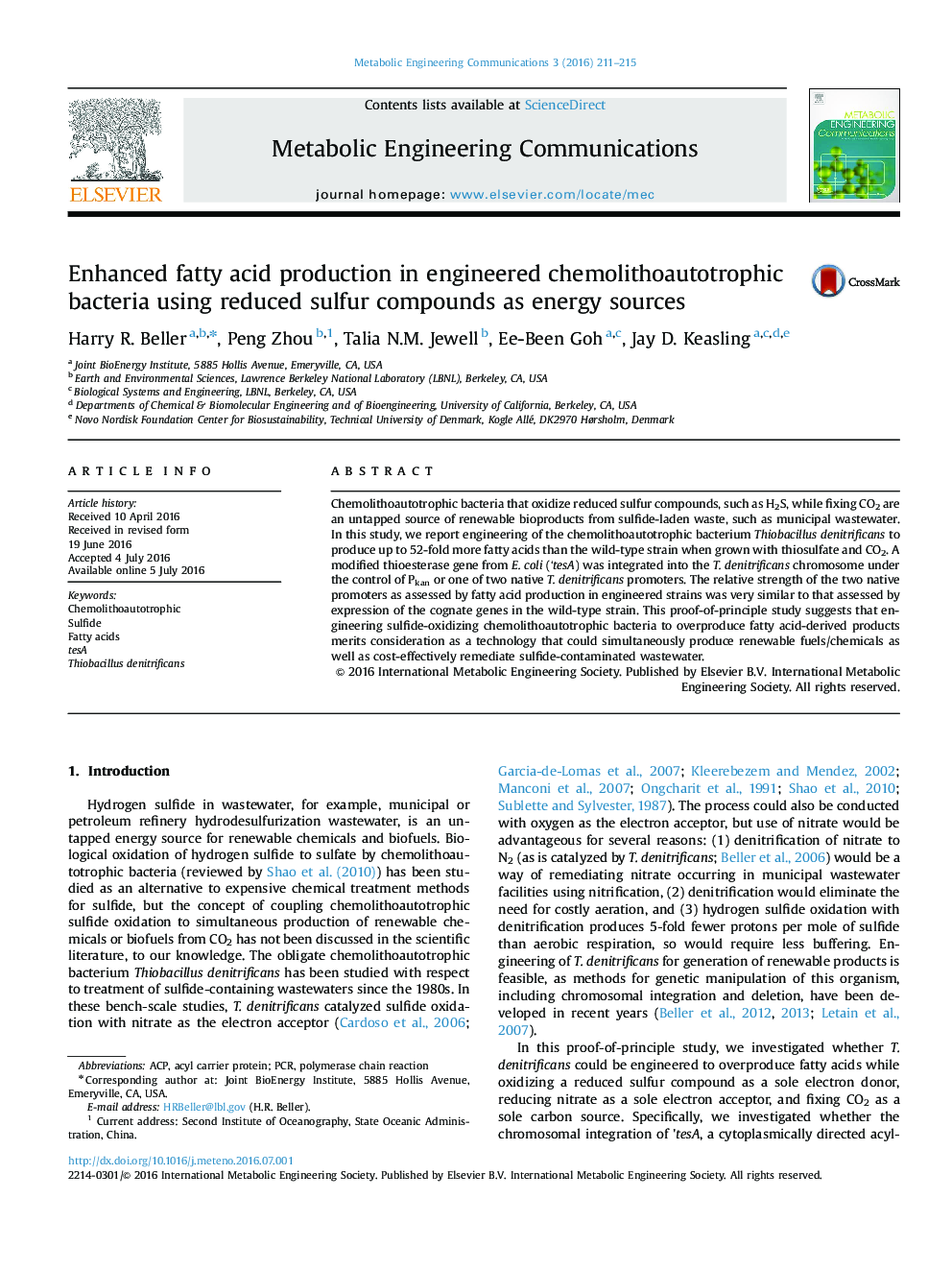| کد مقاله | کد نشریه | سال انتشار | مقاله انگلیسی | نسخه تمام متن |
|---|---|---|---|---|
| 571853 | 1452604 | 2016 | 5 صفحه PDF | دانلود رایگان |
• Reduced S compounds and CO2 can be feedstocks for biobased chemicals and biofuels.
• Fatty acids increased 52-fold in Thiobacillus denitrificans with E. coli ‘tesA.
• Native T. denitrificans promoters driving ‘tesA predictably enhanced fatty acids.
Chemolithoautotrophic bacteria that oxidize reduced sulfur compounds, such as H2S, while fixing CO2 are an untapped source of renewable bioproducts from sulfide-laden waste, such as municipal wastewater. In this study, we report engineering of the chemolithoautotrophic bacterium Thiobacillus denitrificans to produce up to 52-fold more fatty acids than the wild-type strain when grown with thiosulfate and CO2. A modified thioesterase gene from E. coli (‘tesA) was integrated into the T. denitrificans chromosome under the control of Pkan or one of two native T. denitrificans promoters. The relative strength of the two native promoters as assessed by fatty acid production in engineered strains was very similar to that assessed by expression of the cognate genes in the wild-type strain. This proof-of-principle study suggests that engineering sulfide-oxidizing chemolithoautotrophic bacteria to overproduce fatty acid-derived products merits consideration as a technology that could simultaneously produce renewable fuels/chemicals as well as cost-effectively remediate sulfide-contaminated wastewater.
Journal: Metabolic Engineering Communications - Volume 3, December 2016, Pages 211–215
